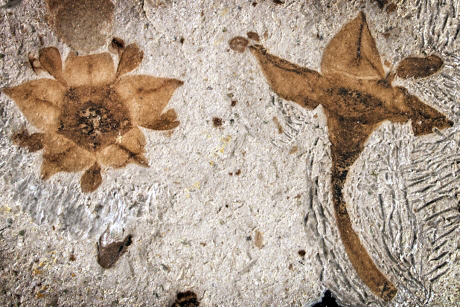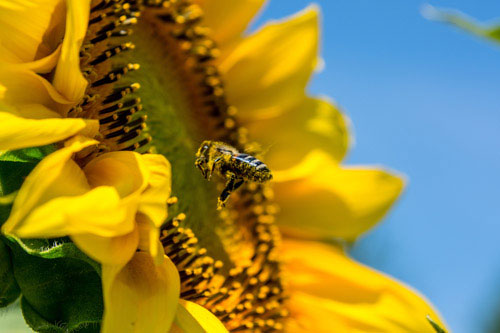When Did Flowers Evolve? A Fantastic Question
The Origin of the Angiosperms (Flowering Plants)
Scientists have concluded that the angiosperms (flowering plants), probably evolved between 149 and 256 million years ago. In a paper published in the academic journal “New Phytologist”, the researchers, which included scientists from the Chinese Academy of Sciences as well as Bristol University, conducted a comprehensive analysis of genetic data from 644 plant taxa. This led them to conclude that, based on this dataset, the flowering plants that dominate the terrestrial flora of the world probably originated as early as the Late Permian or perhaps as recently as the Late Jurassic.
Arguiing over the Origins of the Angiosperms
This new research suggests that flowering plants are not as old as suggested by previous molecular studies, nor as recent as the fossil record for angiosperms reveals. The team’s conclusions underline the power of using complementary studies based on molecular data and the fossil record, in conjunction with different approaches to infer evolutionary timescales, allowing the establishment of a better understanding of the evolution of organisms.
Ancient Buckthorn Flowers Preserved as Fossils

Picture credit: Nathan Jud/Cornell University (USA)
The “Abominable Mystery”
Darwin commented that the origin of flowering plants was an “abominable mystery”, the palaeogeographical origins of flowering plants , which today are represented by nearly 300,000 species remains a controversial area in palaeobotany. Recently, Everything Dinosaur published an article documenting research that suggested that a downsizing in the genome of plants helped the angiosperms become the dominant flora, but when the first flowering plants evolved has proved very difficult to establish.
To read the article on the angiosperm genome study: Downsizing DNA Brings Success to Flowering Plants.
Lead author of the scientific paper, Dr Jose Barba-Montoya (University College, London) explained:
“The discrepancy between estimates of flowering plant evolution from molecular data and fossil records has caused much debate. To uncover the key to solving the mystery of when flowers originated, we carefully analysed the genetic make-up of flowering plants, and the rate at which mutations accumulate in their genomes.”
The Paucity of the Angiosperm Fossil Record
The fossil record for flowering plants, is very fragmentary. Angiosperms appear to have radiated and diversified very suddenly around 125 million years ago. The expansion of the flowering plants may have precipitated substantial changes in the fauna of the Cretaceous, this rapid change in fauna and flora is termed the “Cretaceous Terrestrial Revolution”, a short period in geological time when pollinators, herbivores and their predators underwent an explosive co-evolution.
The Rapid Evolution of Flowering Plants May Have Led to the “Cretaceous Terrestrial Revolution”

Picture credit: Bristol University
A Much Older Origin of the Angiosperms
Molecular-clock dating studies, however, have suggested a much older origin for flowering plants. This implies a cryptic evolution of flowers that has yet to be supported by fossil discoveries. The discovery of wing scales from 200-million-year-old representatives of the Lepidoptera (moths and butterflies), hinted that flowering plants may have originated earlier than previously thought, after all, the adult butterflies and moths might well have fed on nectar from flowering plants.
To read Everything Dinosaur’s article about the ancient wing scales from Lepidoptera: Ancient Butterflies Flutter By.
Professor Philip Donoghue (University of Bristol’s School of Earth Science), a senior author of the newly published study, stated:
“In large part, the discrepancy between these two approaches [the fossil record and molecular dating] is an artefact of false precision on both palaeontological and molecular evolutionary timescales.”
Palaeontological timescales calibrate the family tree of plants to geological time based on the oldest fossil evidence for its component branches. Molecular timescales build on this approach, using additional evidence from genomes for the genetic distances between species, aiming to overcome gaps in the fossil record. Molecular clocks predict the age of organisms by looking at the rate of mutation between different genomes.
Senior author of the study, Professor Ziheng Yang (University College, London) added:
“Previous studies into molecular timescales failed to explore the implications of experimental variables and so they inaccurately estimate the probable age of flowering plants with undue precision.”
Plotting Evolutionary Origins
As a history of the evolution of the flowering plants, the fossil record which is particularly poor, is inadequate and conclusions based on the paucity of fossils are not possible. The scientists compiled a substantial collection of genetic data for many flowering plant groups including a dataset of eighty-three genes from over six hundred taxa. This evidence in conjunction with an extensive review of the fossil record allowed the team to plot the potential origins of the angiosperms within upper and lower limits of geological time.
Co-author of the study, Dr Mario dos Reis (Queen Mary University, London) stated:
“By using Bayesian statistical methods that borrow tools from physics and mathematics to model how the evolutionary rate changes with time, we showed that there are broad uncertainties in the estimates of flowering plant age, all compatible with Early to Mid-Cretaceous origin for the group.”
Scientists may be some way off, being able to pin down the origins of flowering plants, more fossils, particularly of primitive Angiosperms are needed, but at least this new study has attempted to define the uncertainties associated with the evolution of this type of flora.
The scientific paper: “Constraining Uncertainty in the Timescale of Angiosperm Evolution and the Veracity of a Cretaceous Terrestrial Revolution” by J. Barba-Montoya, M. dos Reis, H. Schneider, PCJ Donoghue and Z. Yang published in the journal “New Phytologist”.
Everything Dinosaur acknowledges the assistance of a press release from Bristol University in the compilation of this article.
Visit the Everything Dinosaur website: Everything Dinosaur.

